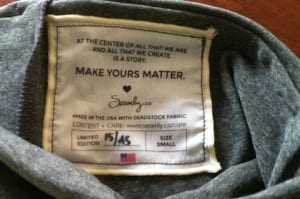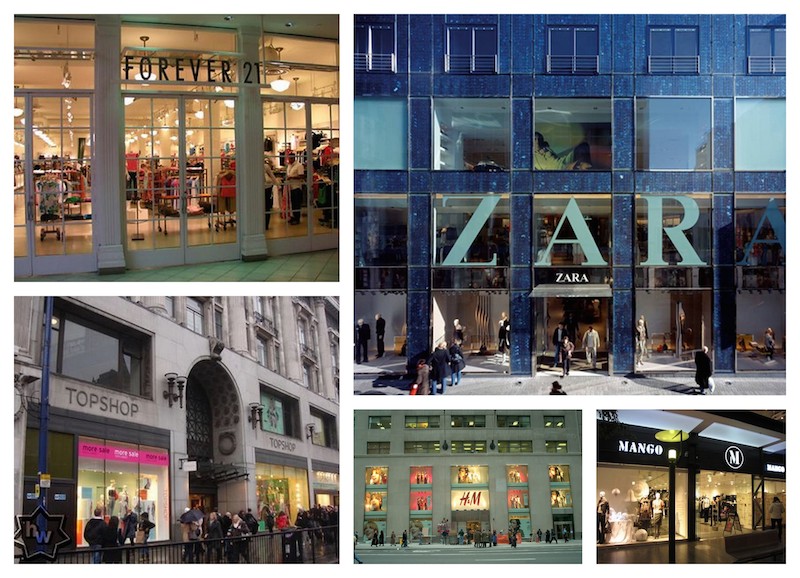There are things every single one of us can do to help alleviate the damage done by the traditional fashion industry. Here are the big four:
1. ) Buy local
At the most basic level, when you buy from a local designer or from a local boutique more money stays in the community. According to SustainableConnections.org, “Several studies have shown that when you buy from an independent, locally owned business, rather than nationally owned businesses, significantly more of your money is used to make purchases from other local businesses — continuing to strengthen the economic base of the community.”
Not only are you investing in your own city, but you’re also reducing your individual environmental footprint, creating jobs, and putting your tax dollars to good use.
Putting that into dollars and cents, Businessweek reported “for every $100 spent at a locally owned store, $45 remains in the local economy, compared with about $13 per $100 spent at a big box store.”
2.) Buy “indie”
Support independent designers who are conscious of the production process all the way through. Many of these designers are mindful of where they source their fabric and are involved in the manufacturing from front to back. Some are even doing the sewing themselves in small independent sew shops or incubators.
The stories behind companies like Piece x Piece, Seamly and Manufacture NY are a refreshing glimpse into transparent clothing production.
Huge progress can be made by consumers purchasing second-hand. It is imperative that we start making use of the resources already available to us instead of buying new clothing.![]()
Any remaining stigma against thrift shopping has gone out the window with the popularity of consignment chains like Buffalo Exchange, Plato’s Closet, and the many local thrift shops popping up all over the world.
Second-hand clothing has even entered the tech scene with websites and apps such as Bib + Tuck, Twice, Poshmark and Nifty Thrifty, boasting beautiful user interfaces that encourage the purchase and reuse of someone else’s unwanted clothing.
Not only are the price tags competitive with the fast fashion giants, but many of the garments appear to be practically new. It’s a win-win for your wallet and for the planet.
4.) Buy less
Buying less is ultimately the solution that can change the world. (And no, it will not lead to an economic Armageddon.)
Considering the fact that society’s throwaway consumption habits are at an all-time high, there are ways to use our dollars more economically and efficiently than buying six H&M dresses for $9.99.
Instead, you can use that same $59.94 (6 x $9.99) to buy an ethically-produced dress from a local designer and wear it for years to come.
I’m not advocating to stop spending. I’m advocating to use your purchasing power in ways that go beyond wearing something once and throwing it away.![]()
—
And if that’s all a piece of cake, here are a few secondary factors to keep in mind:
It can’t be said enough. Do you know where your clothes came from? Who made the t-shirt on your back? Are you comfortable with the possibility that your jeans were made by a modern-day slave on the other side of the world?
Look at the labels on your clothes and ask questions. You can start here.
Wash cold & hang dry
In the United States, the average household does 300-400 loads of laundry per year. A whopping 1,000 loads of laundry are started every second of the day — that’s 13,000 gallons of water per household. Three-quarters of the carbon footprint from a load of laundry comes from drying.
And let’s not forget the amount of chemicals and phosphates that are used in laundry detergent and then leaked back into our water supply, depleting aquatic ecosystems.
To reduce your individual carbon footprint: always wash cold, hang to dry and use phosphate-free laundry detergent.
Have alternative solutions to add to this mix? Tweet me your thoughts at @factory45co.
Photos courtesy of Fashion Revolution Day and Chic Vegan.





